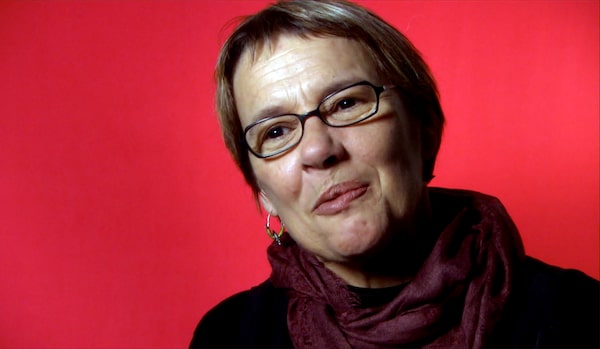
Sylvie Bélanger, Canadian interdisciplinary artist, as captured by Nadine Valcin in Derriere l'image, un portrait de Sylvie Bélanger, 2007.Nadine Valcin/Derriere l'image, un portrait de Sylvie Bélanger, 2007 / NFB
Toronto artist Sylvie Bélanger once filled an art gallery with photographs of its own blank walls and a subway station with images of people riding the escalator or waiting for a train. A teacher, photographer and video artist, Ms. Bélanger created work that commented on the tension between reality and its representation.
Ms. Bélanger died Oct. 8 in Montreal after a long battle with cancer. She was 69.
“It’s a loss for Canadian art; all the people who knew her are thrown off,” said her friend and colleague Ginette Legaré. “She was a beacon for us.”
In the isolated years before the Quiet Revolution, Ms. Bélanger was born May 8, 1951, in Le Gardeur, Que., just outside Montreal, and grew up in L'Épiphanie, a small town in Lanaudière, about 50 kilometres north-east of the city. Her family was working class and handy: Her father was an auto mechanic who also owned a local car dealership. Her mother, a homemaker, suffered ill-health, and as a girl, Sylvie was sent to board at a local convent. Some of the nuns were tough; others were affectionate; either way, the young student learned that her favourite subjects were music, drawing and theatre.
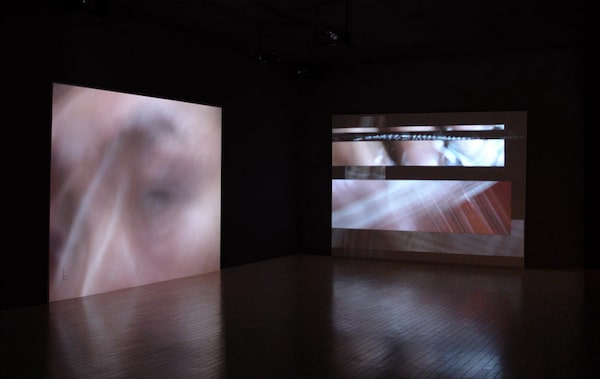
Entre le son et l’image, by Sylvie Bélanger.Courtesy of Birch Contemporary
“She started to like the arts from an early age,” her husband, Richard (Rick) Simpson, said.
As a teenager, she became a supporter of Quebec nationalism and Mr. Simpson tells how her parents were surprised one day in the midst of the October Crisis of 1970 when the RCMP knocked on their door in L'Épiphanie. Ms. Bélanger was studying more than 100 kilometres away at a Cégep in Shawinigan, Que., where she had published the manifesto of the Front de libération du Québec (FLQ) in the college’s newspaper.
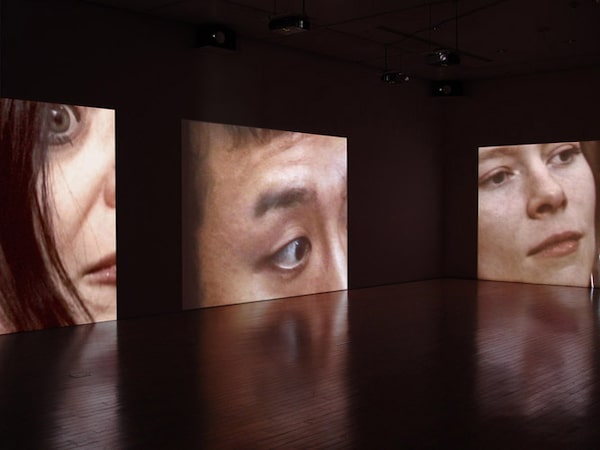
Entre le son et l’image by Sylvie Bélanger.Courtesy of Birch Contemporary
She then enrolled at the University of Ottawa to study experimental psychology, but withdrew because she could not tolerate the use of animals in the labs. Instead, to earn a living, she became a school teacher in Montreal. She was also developing an interest in ceramics in those years and, in preparation for a course at the Banff Centre, she decided that she needed to improve her English: Fate intervened when she met Mr. Simpson at the Montreal language school where he was her tutor.
The couple moved briefly to Vancouver, where Ms. Bélanger enrolled in the fine art program at the University of British Columbia, but they returned to Montreal after the Parti Québécois came to power and Ms. Bélanger finished her degree at Concordia University. She had left political activism behind by this time, but when the PQ lost the first referendum on independence in 1980, she was disappointed and became increasingly eager to leave Quebec.
Sylvie Bélanger's work at Toronto’s Bessarion subway station in 2002 includes images of the backs, legs and feet of a crowd.Dave LeBlanc/The Globe and Mail
“She found it at some level pretty oppressive,” Mr. Simpson said. “She wanted to explore cultural differences.” This time, they headed for Ontario, he enrolled in graduate studies at the University of Toronto while she did her master’s in fine art at York University. With the exception of a brief sojourn in San Francisco, the couple remained in Toronto for the next four decades as Mr. Simpson worked in publishing and then administrative law while Ms. Bélanger established herself as an artist. She came to love the city, but also travelled extensively doing artist residencies and showing work at museums and galleries across Canada, in Europe and in Asia while teaching in Windsor, Ont. and Buffalo, N.Y.
She was widely read and influenced by the work of the French theorist Roland Barthes, famous for decoding the symbols of bourgeois life and for his consideration of the relationship between photography and reality. Her own work usually started with photography and investigated how images are presented to the viewer. For example, for the Bessarion subway station, which opened in Toronto in 2002, she installed tiles with photographic images of hands holding the escalator handrail, as well as the backs, legs and feet of crowds.
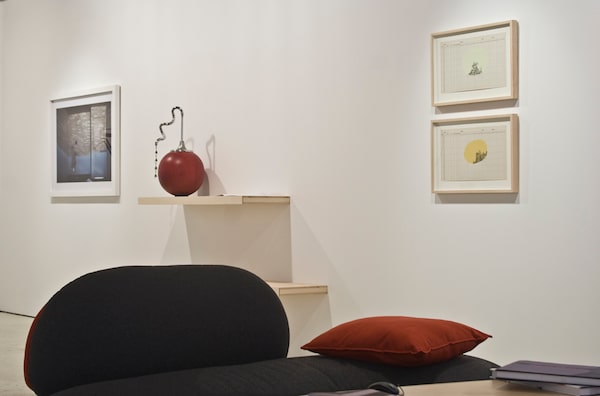
A photograph of Sylvie Bélanger's installation Des fleurs pour décorer ... 2.Courtesy of Birch Contemporary
“It involves a moving crowd looking at a crowd,” Ms. Legaré said, identifying Ms. Bélanger’s themes as perception, presentation and representation.
In a video work from 2008, she posed classical musicians against startling red backdrops and filmed them from behind or in extreme close-up, making their visual display as dominant as their music. In a work from 2016, she made almost imperceptible modifications to the white walls at Birch Contemporary, her dealer on Toronto’s Tecumseth Street, photographed these and then mounted the images back on the walls like a second skin.
Often these interventions used a bit of humour to encourage the viewer to think about how art is presented. In a 2012 exhibition at Birch titled I’ve Always Wanted to be in a Group Show, she created a series of burnished steel wall sculptures in the style of various famed abstract paintings. On a previous occasion, in 2009, she had turned the gallery into a series of model rooms, as though selling condos, and decorated each one with colleagues' art works.
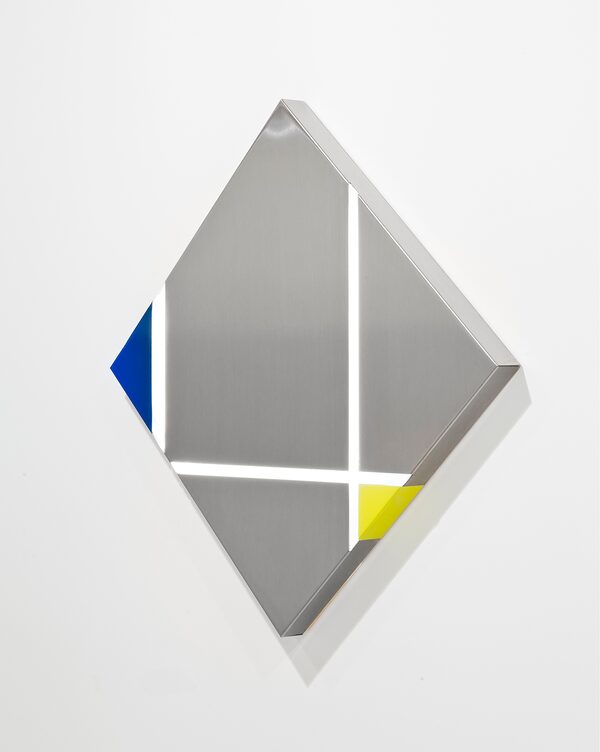
Light Works, by Sylvie Bélanger.Photographer: Toni Hafkenscheid/Courtesy of Birch Contemporary
Ms. Bélanger was also well known as an art instructor from her many years teaching at the University of Windsor in the 1980s and 90s, and at the State University of New York in Buffalo from 2003 until her recent retirement.
“She was an amazing teacher. She had a gift there, her critical abilities and her sense of social justice and total respect for students' positions. She had total generosity towards the work of others, whether students, peers or strangers,” Ms. Legaré said, adding that it could be difficult to walk down a street with Ms. Bélanger without former students stopping her. At any gallery opening she would seek out the artist and begin a lively discussion of the work.
After leaving her teaching job in Buffalo, she and Mr. Simpson decided to finally return to the city where they had met to renovate a studio for the artist and move closer to her family in Quebec. Her Montreal retirement was brief, however, sadly cut short by a recurrence of cancer. She leaves Mr. Simpson; her mother, Denise Deschênes; and her brothers Mario and Laurier Bélanger.
 Kate Taylor
Kate Taylor